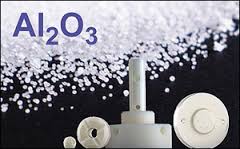According to a new report published by Allied Market Research, titled, "World High Purity Alumina (HPA) Market - Opportunities and Forecasts, 2015-2022", the high purity alumina (HPA) market is expected to reach US $4,498 million by 2022, registering a CAGR of 16.7% from 2016 to 2022. 4N high purity alumina segment occupied more than half of the total HPA market in 2015 and is expected to continue this trend throughout the analysis period.
World demand for HPA has gained an incredible traction, owing to growing technological advancements and increasing demand from applications namely, LED bulbs, electronic displays, automotive and medical. Thus, the HPA market is expected to grow at a CAGR of 20.5%, in terms of volume, during the analysis period. Factors driving the growth of the HPA market are increasing penetration of LEDs in the lighting market, newer applications of high purity alumina in smartphones, smartwatches and tablets. However, higher cost of production is expected to impede the growth of this market.
 |
|
High purity alumina. (Allied Market Research/LEDinside) |
Read more details of the report at:https://www.alliedmarketresearch.com/high-purity-alumina-market
In the year 2015, the LED bulbs’ application segment occupied a dominating position in the world HPA market, owing to the shift towards LED lighting as compared to traditional lighting. Moreover, stringent regulations have led to increased penetration of energy efficient light sources such as LED bulbs globally. In addition, increasing per capita consumption of power has boosted the demand for electricity worldwide, which has led to the rising demand for high purity alumina in lighting industry. Electronics display is another key application segment in this market since several companies are investing in better purity alumina in electronic displays, encompassing tablets, smartphones and smartwatches.
Hydrolysis is the commonly adopted technique to manufacture high purity alumina. HCL technique is not commercialized yet, but will be adopted by companies in the future since it helps to reduce the production cost of HPA.
Key findings of the study
-
LED bulbs’ application segment occupied the highest share in 2015 and is expected to grow at a CAGR of 21.5%, in terms of volume, during the analysis period.
-
Hydrolysis technology dominated in 2015 and would continue to lead the HPA market throughout 2022.
-
5N type segment is expected to expand with the highest CAGR of 21.9%, in terms of volume, throughout the analysis period.
-
China leads in consumption of the high purity alumina in the Asia-Pacific region followed by Japan.
Asia-Pacific accounted for more than half of the total high purity alumina market in 2015 and is expected to maintain its lead position throughout the forecast period, owing to the increasing domestic production of energy efficient lightings, such as LEDs. China is the fastest growing country in the Asia-Pacific region during the forecast period (volume and revenue) since it is a hub for LED manufactures.
Considering the future potential, key players in the market are actively participating in product launches and supply contract activities to establish their footprint in the global market. The prominent players profiled in this report include, Orbite Technologies, Sumitomo Chemical, Baikowski SAS, Alcoa, Nippon Light Metal Holdings, Altech Chemicals Ltd, Zibo Honghe Chemical, and Xuan Cheng Jing Rui New Material.












